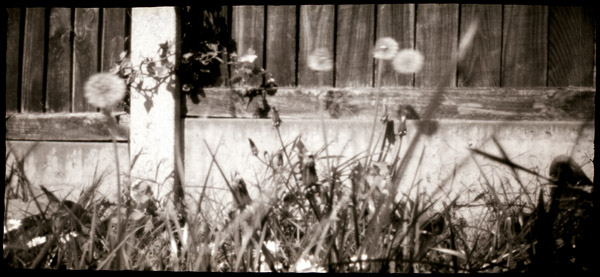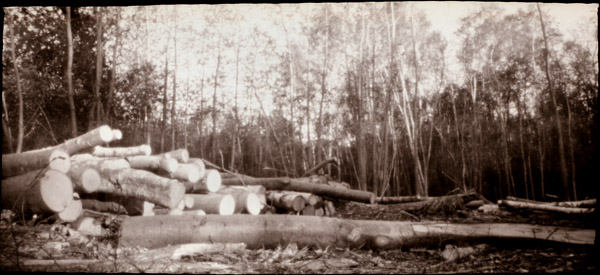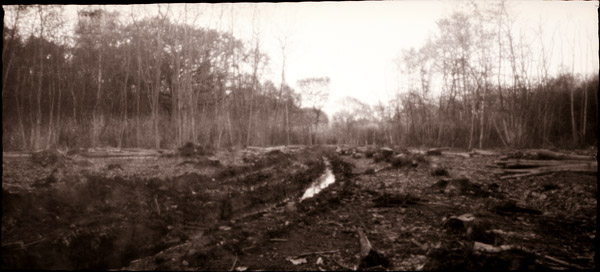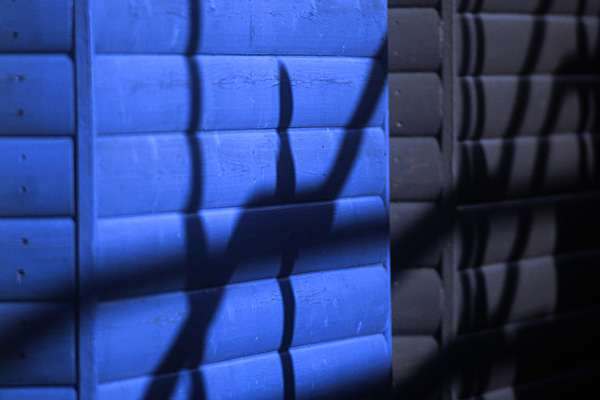It must have been around five years ago that I decided to build a pinhole camera.
I’d come across this website:
http://www.teamdroid.com/diy-high-capacity-panoramic-pinhole-camera/
which sparked my interest, so using the plans on the site as a guide, but making a few minor adjustments, I set about cutting, shaping, sanding, gluing, drilling and painting.
I used 6mm MDF for the outer shell, and 6mm “mighty-core” foam board for the internals, making quite a sturdy little box. A simple winding mechanism pulls the 120 film in front of a piece of thin brass shim, which I hand-drilled with a 0.25mm drill held in a pin chuck.
With the 0.25mm diameter hole, and a distance from pinhole to film of 40mm, the f/stop according to Mr Pinhole’s calculator is f160.
A steel washer is glued onto the front of the brass shim in a recess on the front of the box, and a “memo board” type magnet fits snuggly into the recess as a shutter.
Upon completion, the little black box became a desk ornament until just two weeks ago.
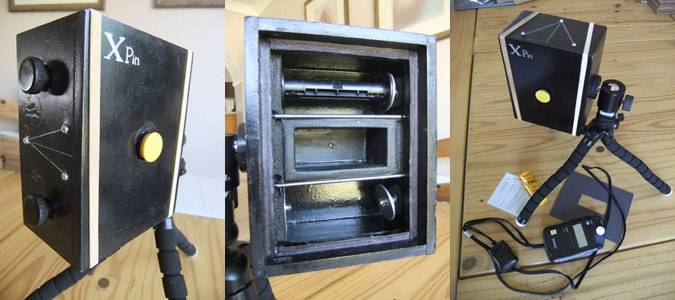
I was very pleasantly surprised by the results.
There were a few errors, a couple of accidental double exposures when I forgot to wind on, but I think I have the frame spacing fairly well worked out, and reckon I should get around 22 to 24 shots per roll.
First time out was just a test roll, so using a chart I copied from Andrew Sanderson’s “Night Photography” book, I exposed according to metered readings (metered at f8 and adjusted accordingly) and took a second, longer exposure to account for reciprocity failure.
As it turned out, the standard metered exposures all resulted in completely clear negs due to gross underexposure, but the exposures adjusted for reciprocity gave a decent result. So, future excursions into the wonderful world of pinhole should be more successful.
Pinhole photography is slow and deliberate and requires patience. Due to the long exposure times, the camera is recording the passing of time rather than stopping it in a fraction of a second. That, along with the lack of sharp focus, results in a unique, beautifully soft, dreamy image that’s a world away from the hyper-reality of digital photography.
Here then are a few shots from my test roll. Film is Ilford delta 100, developed in D-76. 
